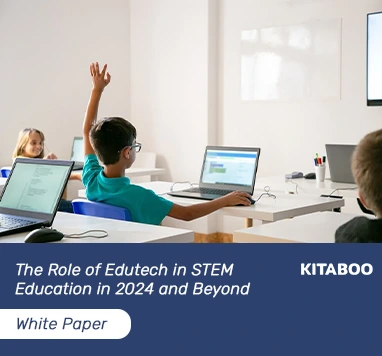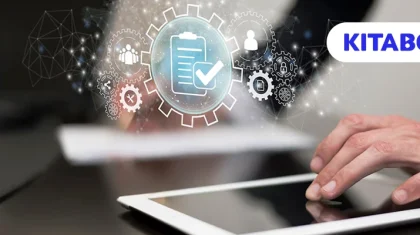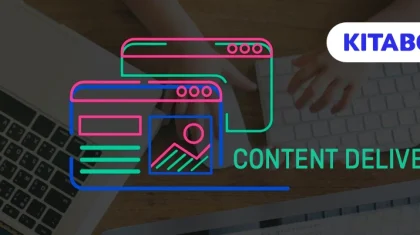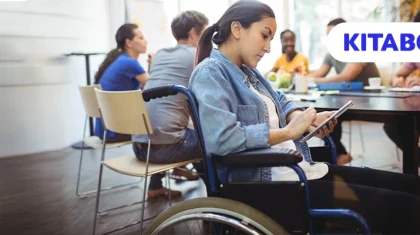
How Student Performance Tracking Helps Teachers Provide Individualized Instruction
An educator’s purpose is to ensure that their lessons – whether delivered online or physically – are designed in such a way that each student in the classroom grasps it to the best of their ability. However, not many know that a part of ascertaining a good student outcome is understanding how students interact with the coursework and how they are performing.
It is for this reason that student performance tracking has taken center stage for educators in helping them assess the best way to design, create, and deliver a course. Especially for detailed and interactive courses delivered through platforms like KITABOO, it is essential to keep track of student performance across various modules and lessons consistently.
Let’s dive in to understand the several ways in which student performance tracking can help educators individualize their instruction while reducing the strain on teaching efforts.
Table of Contents
I. What is Student Performance Tracking?
II. How Does Student Performance Tracking Help Provide Individualized Instruction?
- Individual and Overall Evaluation
- Curriculum Adjustments
- Student Outcome Forecasting
- Enhanced Engagement
- Encouragement
- Tandem Tracking
III. Summing it Up
What is Student Performance Tracking?
Student performance tracking is the process that teachers use to assess how each student is faring through a lesson.
In the digital age, there is software available to help teachers track student performance through a lesson, a course, a session, or through the entire term. Student performance tracking systems help teachers keep track of:
- Student assignment summaries
- Results in all the tests and assessments
- Student progress graphs (chronological and historical)
- Attendance details
As is obvious, student performance tracking systems are dedicated to providing teachers with performance-related analytics for each student enrolled in the classroom.
How Does Student Performance Tracking Help Provide Individualized Instruction?
Student performance tracking systems are crucial tools that enable educators to gather critical data on student progress. With clear analytics reflecting the level of understanding of each student, teachers can take proactive measures to address any performance issues and improve the outcomes accordingly.
Below are the six key ways in which student performance tracking helps teachers provide individualized instruction to students.
1. Individual and Overall Evaluation
The analytics powers vested in student performance tracking systems enable the teachers to view the progress of each individual student at a granular level. It even facilitates observing the overall performance of the classroom as a whole.
The tracking systems have features that:
- Help teachers assess the time-based performance of individual students.
- Identify the bottlenecks each student is facing through visualized data representations of the progress report.
This information is a great asset for teachers to streamline the lesson for each student individually. This can be achieved through a centralized console by unlocking new modules or introducing augmentative exercises to help boost student performance for everyone.
2. Curriculum Adjustments
Student tracking systems generate highly accurate reports of the performance of each student enrolled in a course.
In addition to reflecting the progress of each student individually, these courses highlight several other aspects of student progress. For example, teachers can view the areas of the curriculum where students are generally raising more queries, not completing the associated activities, taking longer to complete a lesson, etc.
This enables the teachers to address the issue at the root by introducing learning aids, Q&A, or extra classes to help students learn better.
3. Student Outcome Forecasting
Student tracking systems are also geared to provide teachers with a fairly accurate forecast of student performance in the upcoming modules and lessons based on historical data.
Knowing this information beforehand helps teachers plan the instruction in a way that helps the students avoid the predicted slump in learning.
For example, for a student forecasted to attend only three classes out of five, the teacher can individualize the course. The teacher can cover more ground for that particular student within fewer sessions of longer duration (or plan the recovery in any other way that is suitable.)
4. Enhanced Engagement
Individualized instruction has become pivotal in enhancing student engagement in classrooms today.
For example, in a classroom with five quick learners and 25 average students, it is important to pace a course a little faster for the former category and keep the pace manageable for the latter.
Using analytics generated on the student performance tracker, the teachers can easily create more engaging lesson paces for quick learners. This way, students will retain their interest in the course even if they are done with a module while others aren’t.
5. Encouragement
One of the key qualities of individualized instruction is being able to provide encouragement and guidance to a student when they are stuck at a point in the coursework. Not only does it help get the student back on the learning track, but it also improves the overall outcome of the lesson.
This is where student performance tracking systems shine the best. The reports help teachers identify the concepts or modules that students are taking the longest to complete.
The assessment results also highlight the areas of coursework in which students did not perform as expected. This enables teachers to plan guidance and encouragement.
6. Tandem Tracking
Tandem tracking is a feature that enables teachers to keep track of all of their students within the same interface. This data is kept organized based on the level, year, class, curriculum, or any other category that teachers specify.
The tracking system presents student reports classified based on custom categories and labels. It helps teachers keep track of hundreds of datasets and highlights the individualized learning needs of students across the entire institute.
Summing It Up
In the digital age, data is helping teachers to streamline their courses and provide new and improved learning experiences to the students. Student performance tracking systems reinforce teachers’ backstage operations and help them plan and adjust the curriculum according to the needs of each student.
In combination with interactive learning resources and eBooks from digital textbook platforms like KITABOO, teachers can significantly enhance the learning outcomes from their courses. Analytics, interactive learning, and engagement can be combined effectively using student performance tracking and KITABOO to improve overall outcomes.
Suggested Reads:
Discover how a mobile-first training platform can help your organization.
Kitaboo is a cloud-based platform to create, deliver & track mobile-first interactive training content.







